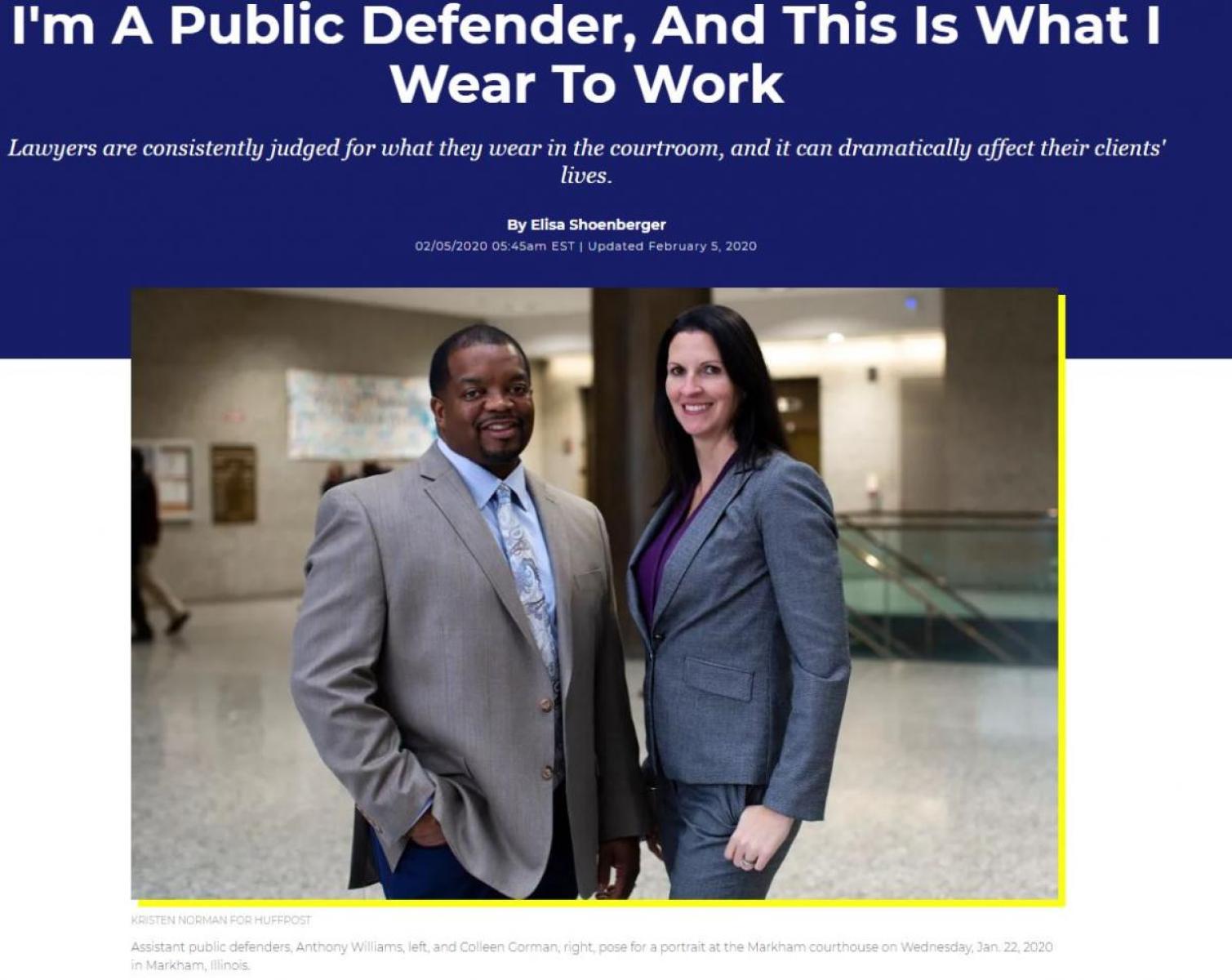
When people’s lives are in your hands, dressing professionally is taken to a new level.
Public defenders play a critical role in society, representing people in criminal cases who can’t afford representation ― a right that’s promised by the Sixth Amendment. Public defenders believe they need to look their best to defend their clients in judge and jury trials, so we spoke to two.
Colleen Gorman, assistant public defender in Cook County, Illinois
Colleen Gorman has outfits ready for any occasion, whether it’s a day spent in the office or going to court in Cook County, which includes Chicago and the suburbs closest to it. When she’s in her office, she’ll wear slacks and a top with a blazer, and she keeps a variety of suit jackets handy, a not-uncommon practice with attorneys.
But when she’s in court, she “steps it up a notch” by wearing her newest full suit — matching pants or skirt and a jacket— and her shiniest shoes. “I try to present to a jury the degree of professionalism that is required for my job being a public defender,” Gorman told HuffPost. “It’s a serious job with extremely serious consequences. You want to make sure the jury takes you as seriously as they need to.”
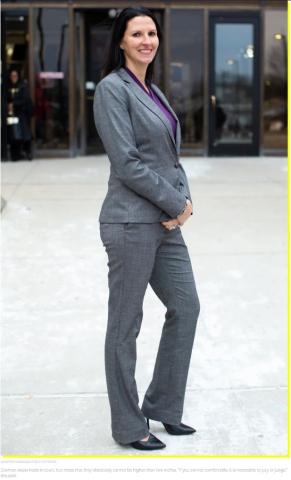
Gorman chooses suits in neutral and dark colors such as gray, navy blue and black. The outfit she’s wearing in the photo shoot for this story is a pantsuit from White House Black Market, a Hawthorn brand top and Vince Camuto shoes.
She noted that it’s getting harder to find full suits these days, relying on places like Ann Taylor and Banana Republic. Gorman said Ann Taylor uses the same materials year after year, making it easy to pick up pants that match a jacket she might have bought years earlier.
When Gorman appears in court, she wears heels, and she keeps a basket full of them in her office. She likes heels because they look good with a skirt, but they absolutely cannot be higher than two inches. “If you are not comfortable, it is noticeable to jury or judge,” Gorman said. “That can be distracting, you don’t want your feet to be the focus. And that goes for your whole outfit.”
Gorman explained that she avoids bright colors of nail polish or excessive jewelry because that can be seen as flashy. She prefers gray shades of nail polish and wears small hoops in her ears, and her hair is often up in a clean bun or down; she avoids a messy bun to prevent the jury being distracted by her appearance.
With a jury trial, Gorman makes a point of wearing a designer bag in and out of the courthouse. “We want jurors and community to think we are top caliber.”
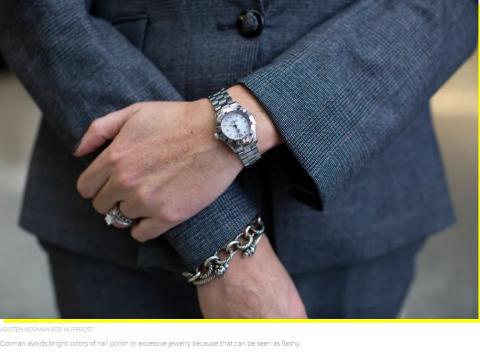
Gorman said she feels it’s her duty to counter misconceptions about public defenders, and her attire is one of the ways she does that. “Some people think that means public defenders aren’t as competent as a ‘paid attorney.’ By dressing professionally, we show that we take ourselves seriously and that we are good at our jobs.”
She and her fellow public defenders are in court more often than your typical lawyer, often handling 60-100 cases at the same time. “We’ve seen more, we’ve done more,” Gorman said.
Gorman doesn’t only worry about her own personal appearance ― she also wants to make sure her clients are prepared for court. Gorman and her colleagues ask their clients to wear a suit; sometimes family members provide them, but not everyone can afford a suit. To help their clients, Gorman’s office has a closet full of shoes, shirts, jackets, ties and other clothes in a mix of sizes and styles. Public defenders want to avoid having their client appear in court wearing their prison uniform or nonprofessional attire that may impact how the jury hears the case.
Anthony Williams, assistant public defender in Cook County
When Anthony Williams is not in the courtroom, he’ll wear a comfortable shirt with a blazer and trousers. He’ll often wear Dockers slacks and shirts when he goes out on investigations, because he can wear them with or without a tie, and he can roll up the sleeves. For shoes around the office, he likes Clarks both for comfort and their appropriateness for the courtroom.
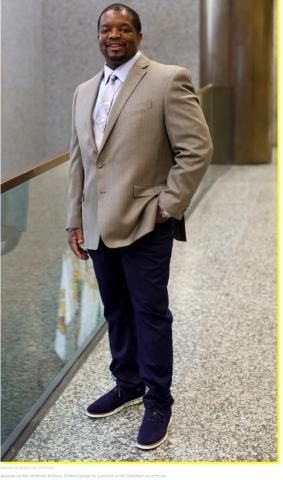
Similar to Gorman, Williams makes a point of wearing suits in the courtroom. He notes that he likes Ralph Lauren’s white shirts because of the fit and cut, and for ties, Williams prefers a nice solid tie, opting for black ― in the summer and spring, he’ll experiment with colors like light blue or light green, but nothing too flashy. He also ensures that all of his clothes are ironed, neat and fitting.
“Jewelrywise, I keep it simple, maybe a nice watch,” Williams said, “and a simple wedding ring.” And he goes to the barbershop every Saturday to keep his hair short and his goatee tidy. In court, he uses a Kenneth Cole briefcase.
“You have to represent yourself and your client to the point where you want to be taken seriously,” Williams explained. “It’s important to dress the part.”
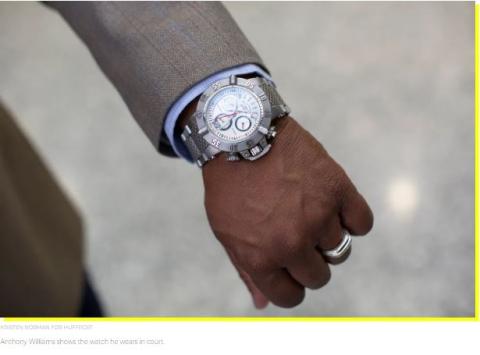
Williams also works with clients to ensure they are also prepared for court. The day of our interview, he had brought in clothing that he thought would fit a client so the client would be ready for a jury trial that was about to begin: “I want the theme to be consistent as it relates to the message that we are delivering.”
Williams recalled one trial when the jury judged his client for not dressing formally enough. In that case, Williams’ client couldn’t afford dress shoes, so he wore his suit with sneakers. When the defendant gave his testimony, the jury saw his sneakers and felt that the defendant “was trying to fool them,” according to Williams, because the shoes were inconsistent with the suit and, therefore, the message that his client was a pulled-together, responsible individual. The incongruence between shoes and suit played a part in the jury’s decision, Williams said. “Now what that had to do with anything, I don’t know,” he said, but it reinforced the idea to “be as tidy and as neat as possible. You can convey the message that I’m prepared and I’m ready, I’m believable to the information that I’m reciting.”
